In one of his recent videos, coach Pete Clark said that a regular of the NL50 fast tables on the GGPoker network approached him and complained that he was playing at zero. In response, Pete quickly looked through 50 of his hands that reached at least the turn (and with a pot no less than the required value) – and identified five main mistakes that dragged the poor fellow down.
Leak #1: Loose preflop in a high-rake game
Our hero plays NL50 on GG, and the rake there is such that you can’t really spoil it. You simply don't have the right to play hands that lose in the long run. And for some reason, this guy gets into such hands all the time.
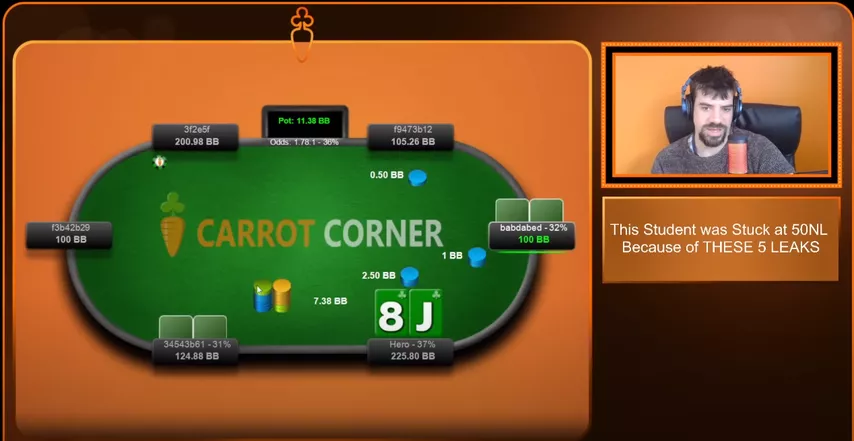
Here's a great example. Why open a hand UTG that is not playable from this position and with a high rake? And then also call a 3-bet with it. Tired and on tilt? Well, go for a walk and relax, why press buttons at random? A bad open and call too, a completely unnecessary play.
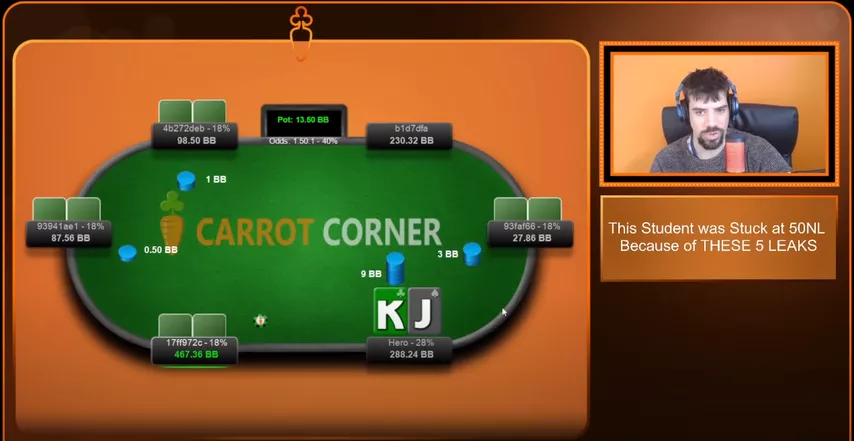
And here we are for some reason 3-betting KJo against a guy who has 27 BB behind him. This is a simple GTO fold: the hand is too weak, there is no fold equity, and there are three players behind us. If the opening player pushes, you will almost always be short. What is this, why? And then the guy says to me: “Pete, I don’t understand what I’m doing wrong, why I’m stuck at NL50.” Well, that's why! Such irresponsible moves bring down the win rate.
Leak #2: persistence in hands where you just have to fold
This usually happens in spots where the field is severely under bluffing. Even regulars play many hands where they had to find a fold one street earlier. Because of this, the red line suffers – because they pay too much, but in the end, they still fold.
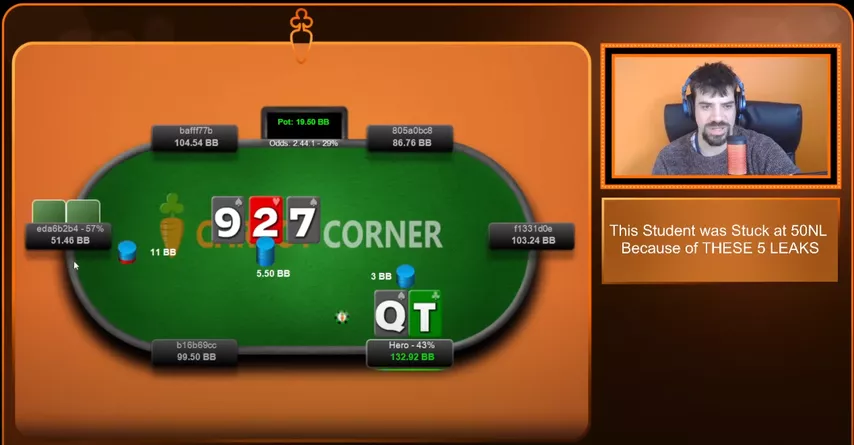
Here we are playing against an obvious amateur, his stack is short. Usually, we will see two scenarios: this is either a maniac on tilt (who will continue to spew off their chips), or we are hit with some kind of nuts like a set or two pair. Sometimes someone can play like this with a mixed range [Ed. — here and below we talk about merged ranges], which includes hands like 87s or 88. But what we usually won’t see from a random fish here are bluffs without equity, as well as check-raise on the flop and check-fold lines on the turn.
Hero calls, turn , the opponent pushes two pots, and we fold.
This is a fold on the flop even in the GTO world, and even more so in reality. The subsequent push on the turn is a completely expected play. But in the end, we gave away extra money and violated the red line. Do not do it like this.
Leak #3: Small bets with value hands
First of all, we are talking about the river. Trying to bet less to get called more often is a huge leak.
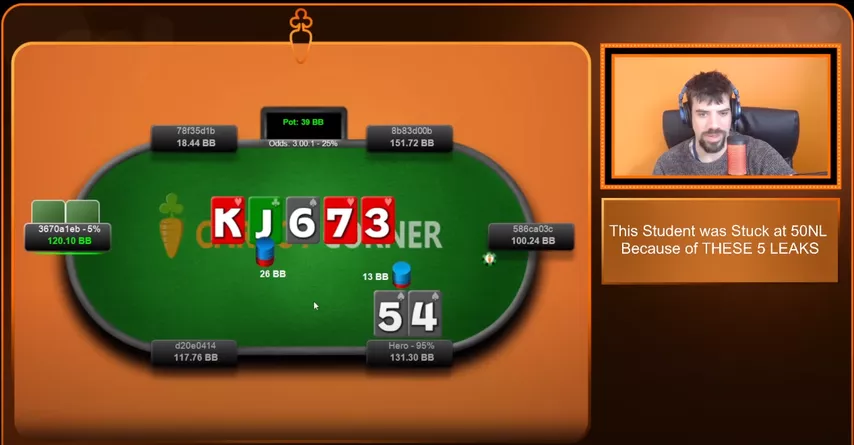
The hero called a min-raise from the small blind, and everyone checked the flop. On the turn, he bet 8 BB to 10 BB and received a call from the original raiser.
How do we evaluate our equity on the river? This is important for choosing value bet sizing. I am sure that the equity is very high, more than 75%. So you can bet boldly and big: yes, the raiser may have some flushes, but not very many of them, because some heart hands will often bet the flop: , , . The opponent has many more hands like QQ, AJ, and Kx.
This is not to say that a half-pot bet on the river is completely bad, but this is an important signal – our hero has a bad habit of betting exactly half the pot on the river. I specifically asked him if he would have chosen the same size if the three of hearts had not come – and he said yes. And in this case, betting 50% of the pot is basically shooting yourself in the foot!
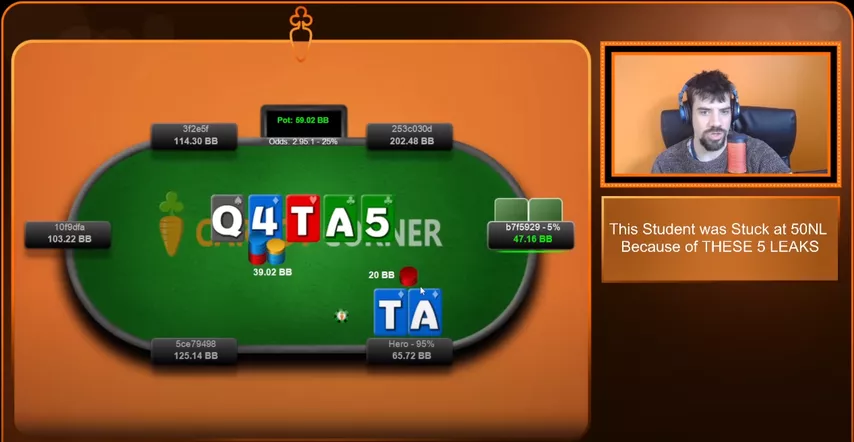
3bet pot button vs cutoff, flop was check-checked, on the turn the opponent led 9.76 BB to 19.5 BB, called, he checked the river.
Checking the flop is normal, but in general, you can range bet this board in a 3-bet pot. Calling on the turn in response to his lead is quite adequate. We have an excellent hand, but not the nuts, and we are in no hurry, there is still a river ahead. Let the opponent continue to bet (although we can come up with reasons for a raise).
What is our equity on the river after he checks? Yes, about 100 percent actually. And here a bet of half a pot is a crime. You should be thinking about winning a bigger pot, not about getting called more often. Thoughts like “So, how much can KQ pay me here” are complete trash. Firstly, your opponent may have more than just KQ. Secondly, why did you decide that if he had KQ he would not pay more?
It is very important! Yes, you will get called a little more often if you bet 20 BB – but you still need to push. In reality, people don't really care how much you bet, and they don't adjust enough to make this strategy profitable for you. Well, according to GTO, pushing simply brings more money: you can win twice as much on the river, and you definitely won’t get called twice as often on a bet of 20 BB. And don’t forget that he can fold KQ or JT for any bet here. In general, just bet big when you have a lot of equity – this is both correct in theory and works great in practice.
Leak #4: not paying attention and playing on autopilot
People play tired, too carelessly, for too long – in general, this is where I include all problems related to psychology. Fast poker tables for 2-3 hours without breaks are a terrible idea. What do you want to play there? It is impossible to maintain concentration all this time.
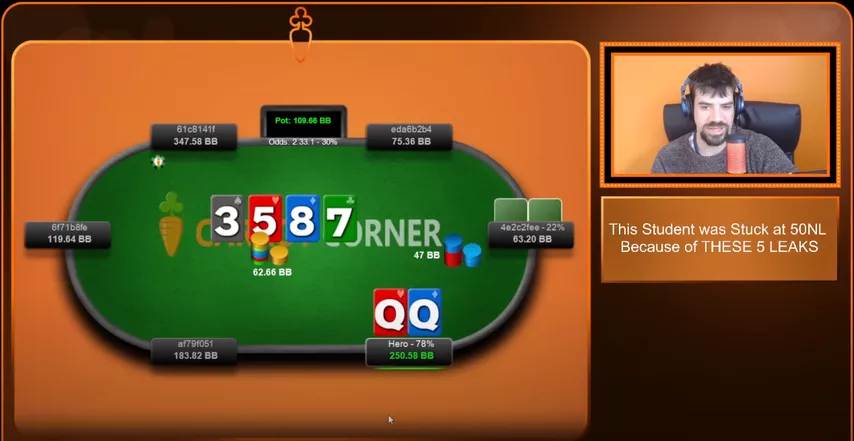
Preflop, the hero opened UTG, received a call from the button and a squeeze from the big blind 14 BB. Call, button folds. On the flop, c-bet 16 BB, call.
So, we have a squeeze from the BB against the UTG and the button. Ask yourself – what does his range look like preflop? And then figure out how different hands in that range play on a given board. Could JJ and TT be there? Yes, but KK and AA on the turn are much more likely because it is not so rare for an opponent to call TT and JJ preflop in these positions. And on the turn with these hands, he can bet with a smaller size or check.
This is also a spot where few people bluff; you won’t see much AK at showdown. If we know that the player is completely on tilt, then there are no options, we pay the turn and river. But if we don’t know anything, we have an excellent spot in front of us, where we can make a powerful exploitative fold on the turn. The opponent clearly has all 12 combinations of KK and AA – and only a pinch of JJ and TT combinations, so usually we will just look at the higher pair. Calling the turn and folding the river is also not an option, it makes no sense, the decision must be made on the turn. It's clear that folding looks nitty, but against a random weak player at NL50, it's the best decision.
Hero called the turn and shoved the river . The opponent showed .
Look #5: Slowplay vs Mixed Range
I'm talking about situations where your opponent's range includes a lot of middle hands. And in this case, you shouldn’t sit and hope that someone will bluff you, you have to figure it out yourself.
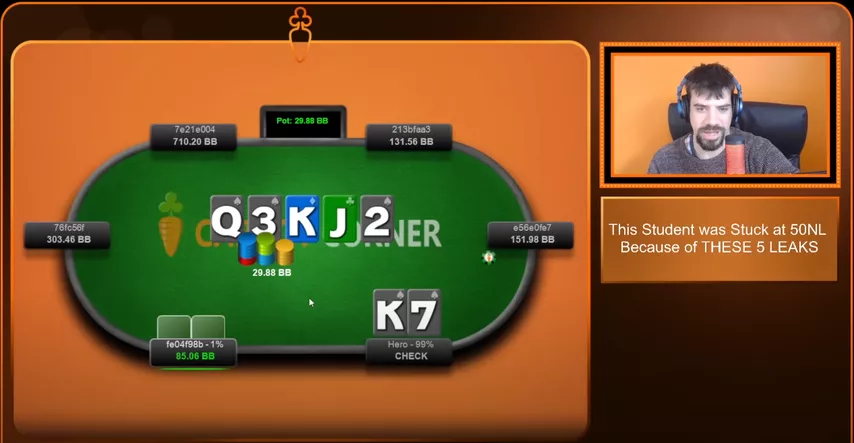
Preflop, the hero opened with the SB and paid a 3-bet of nine blinds from the BB. On the flop, he check-called 5.94 BB into 18 BB, checked turn and river, and the opponent showed .
It's standard before the river, but checking at the end is not good. This is a spot where people will severely under-bluff, primarily because they don't have a polarized enough 3-bet range from the BB. The NL50 field doesn't add enough 3-bet bluffs, and it also doesn't know how to bluff the river with hands like low pairs. Your opponent has a lot of average hands that happily check back.
Yes, we don't have an ideal hand to bet, as we block the top pair. Maybe this is even one of those anomalous GTO situations where the solver will bet small or check. But in the real world, this is a terrible check—just like any check with a value hand against a mixed range. In theory, it may be normal, but in practice (and especially at low limits) slow playing in such spots will not bring you money.
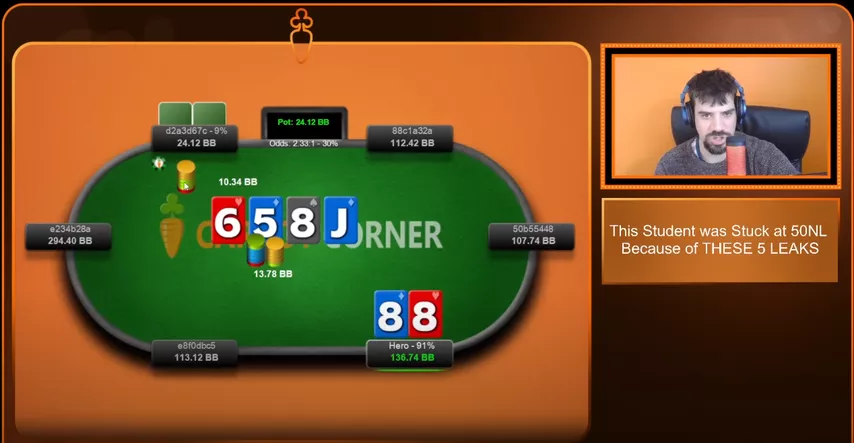
The hero opened UTG and got called by the button with a 40 BB stack. On the flop and turn he check-called, the river was checked.
A normal check-call on the flop, but I would always check-push the turn here. The amateur again has a mixed range, his large turn bet will often become a bet call. And at the same time, there will be many rivers on which he will not push his 24 BB after you check. Not stacking the fish with QJ on the turn is a crime against poker.
There aren't many hands that will bet-fold on the turn but push the river as a bluff. There won’t be many bet-folds here, and even if there are some, the danger of not getting the rest of the stack is still more important. Here he bets 77, 87, 98, JT – a huge number of hands that bet on the turn, but, without strengthening, will check the river. And even if he folds something to push the turn, that’s great, you’ll take away a little share of the pot from him, so even the semi-mythical fold equity works for you here. In position, calling can be considered, but out of position, it is a mandatory push.















